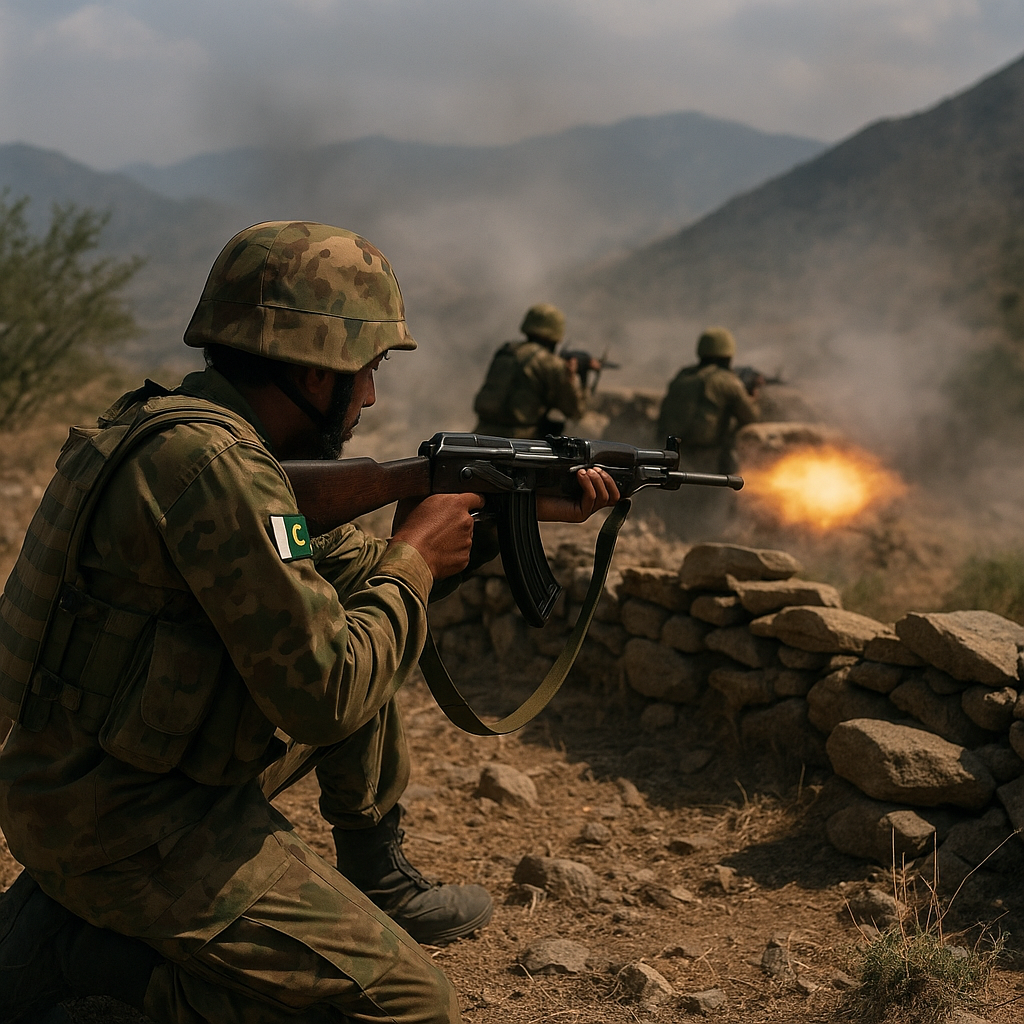Pakistan’s Sharpest Border Confrontation Since 2021: Over 200 Taliban-affiliated Fighters Killed, Crossings Shut — Full Deep Dive
In a major and fast-moving escalation along the Durand Line, Pakistan’s military says its forces killed more than 200 Taliban and Taliban-affiliated fighters in precision retaliatory strikes and raids after a coordinated overnight assault on Pakistani border posts. Islamabad confirmed 23 soldiers martyred during the clashes and announced that several Afghan positions were temporarily seized and destroyed during the operation. The confrontation prompted closure of major border crossings and sparked urgent regional calls for restraint.
What Happened — Sequence of Events
The situation escalated when Taliban forces — allegedly working with TTP elements — launched coordinated attacks on multiple Pakistani border posts across Khyber Pakhtunkhwa and adjoining districts. Pakistan says it responded with precision strikes, artillery shelling, and targeted raids aimed at terrorist training facilities, command nodes, and logistics hubs inside Afghan territory, briefly capturing several hostile positions before pulling back to prevent further escalation.
Afghan authorities, however, offered a sharply different account, claiming to have inflicted heavier losses on Pakistani forces and regained control of the contested posts. The result was not just a fierce military engagement but also an intense information war, with both sides sharing contrasting casualty reports and battlefield claims.
Current Status on the Ground
As of now, major crossings including Torkham and Chaman remain closed, with three smaller posts also sealed off, effectively halting cross-border movement and trade. Security has been reinforced along the frontier, while intermittent gunfire and skirmishes continue in some sectors, particularly near Kurram and Khyber.
Military sources indicate that most large-scale engagements have subsided, though heightened alert remains in place across border districts. Both sides continue to maintain a heavy troop presence, and communication lines between Islamabad and Kabul are said to be under strain.
Humanitarian and Economic Fallout
The closure of border points has already taken a severe toll on local economies. Thousands of daily wage earners, traders, and transporters have been left stranded. Trucking lines, informal trade, and labor movement have all been disrupted, causing shortages of basic goods in some frontier towns.
Local communities near the border have begun relocating to safer areas amid fears of renewed artillery exchanges. If the closure extends beyond a few days, the humanitarian situation could worsen, with potential price spikes in essential commodities across both sides of the border.
The Information War — Conflicting Claims
Pakistan’s official tally cites 23 soldiers martyred and “over 200 militants eliminated.” Kabul’s version of events paints a different picture, claiming heavier Pakistani losses. Neither side’s account has been independently verified, and such contradictions are common in volatile border zones.
This fog of war has also extended online, with social media flooded by unverified videos and claims from both Afghan and Pakistani users — each attempting to shape the narrative in their favor.
Why This Flare-Up Matters Strategically
1. TTP Sanctuaries and Cross-Border Militancy
Pakistan has long accused the banned Tehreek-e-Taliban Pakistan (TTP) and allied networks of using Afghan soil to stage attacks inside Pakistani territory. The military’s latest operations are being described as “defensive precision responses” to eliminate these sanctuaries. The TTP threat, according to Pakistani officials, remains one of the biggest security challenges in recent years.
2. The Fragile Durand Line
The Durand Line, dividing Pakistan and Afghanistan, remains one of the most sensitive borders in South Asia. Despite being a de facto boundary, it has never been fully accepted politically in Afghanistan. Frequent cross-border infiltrations, smuggling, and tribal movements make it difficult to secure, turning every local skirmish into a potential diplomatic crisis.
3. Regional and Geopolitical Underpinnings
Pakistan has accused elements within Afghanistan of supporting groups aiming to destabilize its western regions, while Kabul accuses Islamabad of cross-border incursions. These mutual suspicions, combined with regional rivalries and outside influences, have intensified the complexity of what would otherwise be a localized military exchange.
Political Calculus in Islamabad and Kabul
For Pakistan, the stakes are high. A strong military response demonstrates resolve and defends territorial sovereignty, but prolonged confrontation risks economic strain and diplomatic friction. The government faces pressure from domestic audiences to maintain security while avoiding a drawn-out border conflict.
Kabul, too, faces its own challenges. The Taliban-led administration cannot afford to appear weak in front of its own fighters or population. Both sides are thus locked in a cycle where political optics and military posturing threaten to override diplomatic restraint.
Diplomatic Moves and Mediation Efforts
In the aftermath of the clashes, several regional states — including Iran, Qatar, and Saudi Arabia — have reportedly urged restraint and offered to mediate between Islamabad and Kabul. Diplomatic channels remain open, though tense. There are growing calls from international observers for both nations to resume dialogue under a regional security framework to prevent further escalation.
Possible Scenarios Ahead
- Rapid De-escalation:
Diplomatic mediation and back-channel talks could help both sides cool tensions and reopen border crossings within days. This would be the most stabilizing outcome, though it requires both capitals to find face-saving off-ramps. - Sustained Low-Intensity Conflict:
A continued cycle of small-scale raids, shelling, and sporadic closures could persist, affecting local trade and communities without an outright war declaration. - Wider Regional Spillover:
If external actors or militant groups exploit the crisis, it could expand beyond a bilateral dispute, potentially destabilizing the broader region — a scenario both sides wish to avoid.
What to Watch in the Coming Days
- Any official revisions in casualty or territorial claims by either side.
- Reopening timelines for the Torkham and Chaman crossings.
- Whether independent observers or journalists gain access to frontline areas.
- Statements from mediating nations or international organizations signaling progress in talks.
Bottom Line
The October 2025 border confrontation is a stark reminder of the fragility that defines Pakistan-Afghanistan relations. With clashing narratives, limited transparency, and high political stakes, the situation remains tense and unpredictable.
As both nations weigh military pride against regional stability, the real cost continues to be borne by border communities — those who live closest to the line yet farthest from the politics shaping their fate.
Whether this becomes a short-lived flare-up or a drawn-out standoff will depend on how quickly cooler diplomatic heads can prevail.



